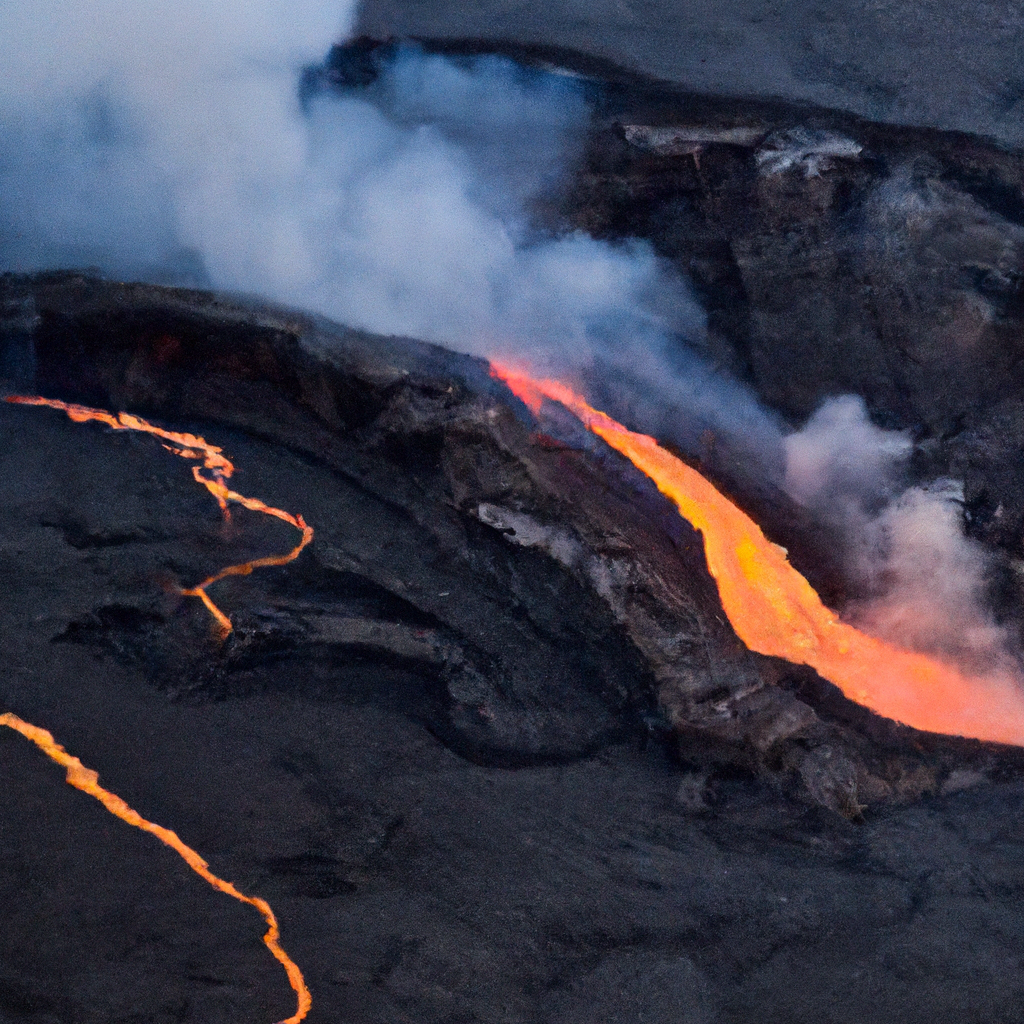Immerse yourself in the awe-inspiring world of Hawaii’s volcanic landscapes as we explore the profound significance of volcanoes in shaping this tropical paradise. From the creation of its stunning natural wonders to the profound influence on Hawaiian culture, the volcanic activity that has shaped Hawaii’s unique landscape is a captivating tale waiting to be discovered. Join us on this journey as we unravel the mysteries, uncover the geological wonders, and delve into the cultural significance of these majestic volcanoes. So, grab your virtual lei and get ready to be mesmerized by the remarkable role volcanoes play in Hawaii’s formation and culture.
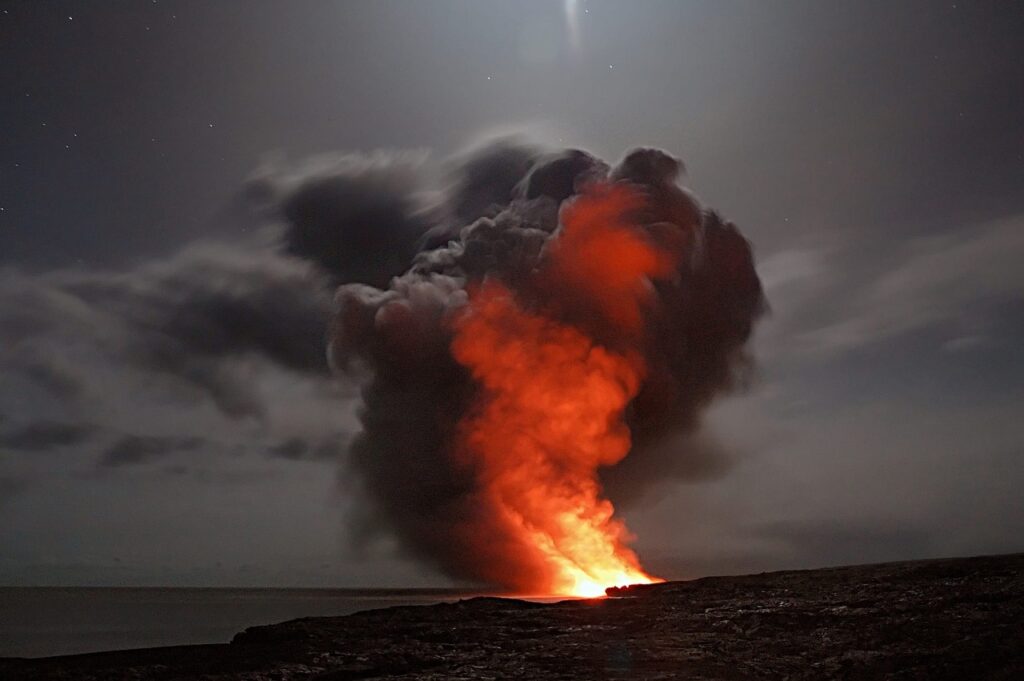
Formation of the Hawaiian Islands
Hawaii, a breathtaking archipelago located in the Pacific Ocean, boasts a unique landscape that has been shaped by volcanic activity for millions of years. The formation of the Hawaiian Islands can be attributed to the Hotspot Theory, which suggests that a stationary mantle plume beneath the Earth’s crust has created a series of volcanic islands over time. This theory explains the sequential formation of the islands as a result of the Pacific tectonic plate moving over the hotspot. As the plate drifts, new volcanic islands are formed, creating the string of islands that make up the Hawaiian archipelago.
Hotspot Theory
The Hotspot Theory provides a compelling explanation for the formation of the Hawaiian Islands. According to this theory, a mantle plume, or a column of hot molten rock rising from deep within the Earth’s mantle, lies beneath the Pacific tectonic plate. As the plate moves over the stationary hotspot, magma rises to the surface, leading to the formation of volcanoes. Over time, as the Pacific Plate continues to move northwest, new volcanic islands are created, while older ones gradually move away from the hotspot and erode.
Types of Volcanoes in Hawaii
Hawaii is home to three main types of volcanoes: shield volcanoes, cinder cones, and stratovolcanoes. Shield volcanoes, such as Mauna Loa, are low-profile and have gently sloping sides due to the fluid nature of the lava they erupt. These types of volcanoes have a steady eruption rate, producing vast quantities of basaltic lava. Cinder cones, on the other hand, are smaller and steeper, with explosive eruptions that result in the accumulation of ash and cinder materials. Lastly, stratovolcanoes, characterized by their steep slopes and explosive eruptions, are a combination of both shield volcanoes and cinder cones.
Lava Flows and Land Formation
The remarkable land formations of Hawaii owe their existence to the relentless flow of lava from its volcanoes. As the magma erupts onto the surface, it cools and hardens into solid rock, creating new landmass. Over time, layers upon layers of solidified lava build up, resulting in the formation of new land. These lava flows, ranging from rugged, rocky terrain to smoother, gradually sloping surfaces, shape the unique topography of the Hawaiian Islands. Additionally, when lava flows into the ocean, it rapidly cools and solidifies, forming new land adjacent to the coastline.
Volcanic Activity in Hawaii
Hawaii is known for its active volcanoes, with Kilauea being the most prominent and active among them. Located in Hawaii Volcanoes National Park, Kilauea is one of the world’s most active shield volcanoes. Its continuous eruption since 1983 has added significant land acreage to the Big Island of Hawaii. Another notable volcano is Mauna Loa, the largest shield volcano on Earth. Although currently dormant, Mauna Loa has erupted numerous times throughout history, shaping the landscape of the island. Moreover, Hawaii is home to other significant volcanoes, including Mauna Kea, Hualalai, and Haleakala.
Kilauea: The Most Active Volcano
One cannot discuss volcanic activity in Hawaii without mentioning Kilauea. Known as the “Drive-in Volcano,” Kilauea offers visitors a unique opportunity to witness the awe-inspiring power of nature up close. It has been erupting continuously since 1983, making it one of the longest-lasting eruptions in recorded history. Kilauea’s voluminous lava flows have reshaped the landscape and expanded the island’s coastline, exemplifying the ongoing creation of land in Hawaii. Despite its constant activity, Kilauea’s eruptions are generally non-explosive, allowing for a safer viewing experience.
Mauna Loa: The Largest Shield Volcano
Dominating the landscape with its massive size, Mauna Loa is a true behemoth among volcanoes. Rising over 13,000 feet above sea level, this shield volcano is not only the largest in the Hawaiian Islands but also one of the most active on Earth. Mauna Loa has erupted 33 times since its first recorded eruption in 1832, with the most recent eruption occurring in 1984. With its gently sloping sides and predominantly non-explosive eruptions, Mauna Loa exemplifies the classic shield volcano shape and is a testament to the ongoing volcanic activity that molds the Hawaiian Islands.
Other Notable Volcanoes
While Kilauea and Mauna Loa reign supreme in terms of notability, Hawaii is home to other volcanoes that have left their indelible mark on the landscape. Mauna Kea, located on the Big Island of Hawaii, is the tallest volcano in the state, towering over 13,700 feet above sea level. Although dormant for thousands of years, Mauna Kea still stands as a testament to the volcanic forces that shaped this unique archipelago. Hualalai, located on the western coast of the Big Island, is another active volcano that has erupted multiple times in the past few centuries. Haleakala, on the island of Maui, is yet another prominent volcano that offers stunning views and beautiful landscapes.
Erosion and Weathering
While volcanic activity has undoubtedly played a significant role in shaping Hawaii’s landscape, erosion and weathering have also left their mark. Rainfall and rivers have a considerable impact on the erodibility of volcanic soil and rock. The island’s steep relief, combined with the frequent heavy rainfall, leads to the formation of deep gullies, erosion channels, and valleys. Over time, these erosive forces carve out the land, forming dramatic cliffs and canyons. Additionally, the constant pounding of waves against the coastline and the powerful force of the ocean contribute to the erosion of volcanic rock, chiseling away at the coastlines and creating stunning sea cliffs.
Effect of Rain and Rivers
The generous rainfall in Hawaii has a profound effect on the erosion and weathering of volcanic landscapes. The combination of volcanic ash and rainfall creates fertile soils, enabling lush vegetation to thrive. However, heavy rainfall can also lead to increased runoff and erosion, especially in areas exposed to human activities such as construction and agriculture. Rivers, which are abundant on the islands, further exacerbate the erosive effects of rainfall. As rivers flow through steep valleys and canyons, they continue to shape the land by eroding and transporting sediments downstream.
Impact of Waves and Ocean
Hawaii’s Pacific location ensures that the ocean plays a crucial role in the erosion and weathering of its volcanic rock. Waves relentlessly crash against the coastlines, gradually wearing down volcanic formations, sculpting sea cliffs, and creating sandy beaches. Coastal erosion is especially prevalent in areas with weaker volcanic rock, where the relentless force of the ocean carves out notches, sea caves, and arches. The constant battle between the sea and the land results in an ever-changing coastline, showcasing the ongoing shaping of Hawaii’s volcanic islands by the powerful forces of the ocean.
Factors Affecting Erosion
Several factors contribute to the erosion and weathering of Hawaii’s volcanic landscapes. The island’s tropical climate, with its frequent rain showers and warm temperatures, accelerates weathering processes such as chemical decomposition and physical breakdown. Steep slopes and the presence of loose, unconsolidated volcanic material make the land more susceptible to erosion. Additionally, human activities such as deforestation, construction, and tourism can exacerbate erosion rates if not managed sustainably. The delicate balance between volcanic activity, erosion, and human impact underscores the importance of responsible land management and conservation efforts in preserving Hawaii’s unique natural beauty.
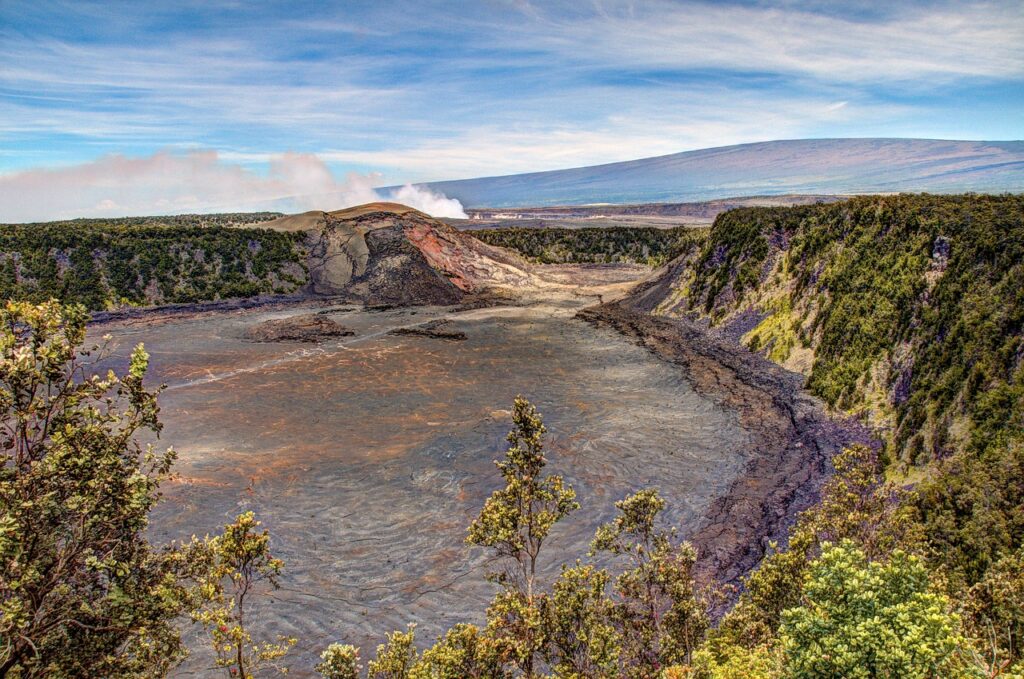
Volcanic Features in Hawaii
Beyond the awe-inspiring volcanoes themselves, Hawaii is home to a plethora of fascinating volcanic features. From craters and calderas to lava tubes and caves, these unique geological formations contribute to the allure and mystique of the islands.
Craters and Calderas
Craters and calderas are unmistakable signs of volcanic activity, and Hawaii has no shortage of these impressive features. Craters are depressions formed at the summit of volcanoes, often resulting from explosive eruptions or collapse events. These crater rims offer breathtaking views of the surrounding landscapes and provide a glimpse into the incredible power of volcanic forces. Calderas, on the other hand, are much larger volcanic depressions and are usually formed by the collapse of a magma chamber after a massive eruption. Halema’uma’u Crater in Kilauea and the summit caldera of Mauna Loa are two notable examples of these volcanic features in Hawaii.
Lava Tubes and Caves
Lava tubes are a fascinating result of volcanic eruptions, providing underground conduits for flowing lava. As lava cools and hardens on the outer surface, it continues to flow through the lava tubes, leaving behind natural hollow tunnels. These lava tubes can range in size from small passages to expansive cave systems. Some lava tubes in Hawaii, such as Thurston Lava Tube in Hawaii Volcanoes National Park, are accessible to the public, allowing visitors to explore these fascinating underground formations and gain a deeper understanding of volcanic processes.
Pele’s Hair and Other Formations
Volcanic activity in Hawaii has given rise to unique formations that capture the imagination. One such formation is “Pele’s Hair,” a delicate, thread-like volcanic glass that resembles strands of hair. These strands are formed as molten lava is ejected into the air and rapidly cools, solidifying in thin, fiber-like strands that are carried by the wind, creating ethereal landscapes. Other formations include lava deltas, where molten lava flows into the ocean and creates new land, and volcanic spatter cones, which result from the spattering and accumulation of lava fragments around an erupting vent.
Volcanic Hazards and Land Destruction
While the volcanic landscape of Hawaii is undeniably captivating, it also presents inherent risks and hazards. Eruptions and the associated phenomena can cause significant damage to property, impact air quality, and pose health risks to humans and other living beings.
Lava Flows and Property Damage
Lava flows pose a unique threat in Hawaii, often impacting nearby communities and resulting in property damage. As lava advances, it engulfs and destroys everything in its path, including homes, infrastructure, and vegetation. The slow-moving nature of many lava flows allows for the evacuation of affected areas, but the destruction left in their wake can be devastating. The 2018 eruption of Kilauea, for example, destroyed over 700 homes and displaced thousands of residents on the Big Island. Despite these risks, communities continue to live in close proximity to active volcanoes, drawn by the beauty and natural resources that the volcanic landscape provides.
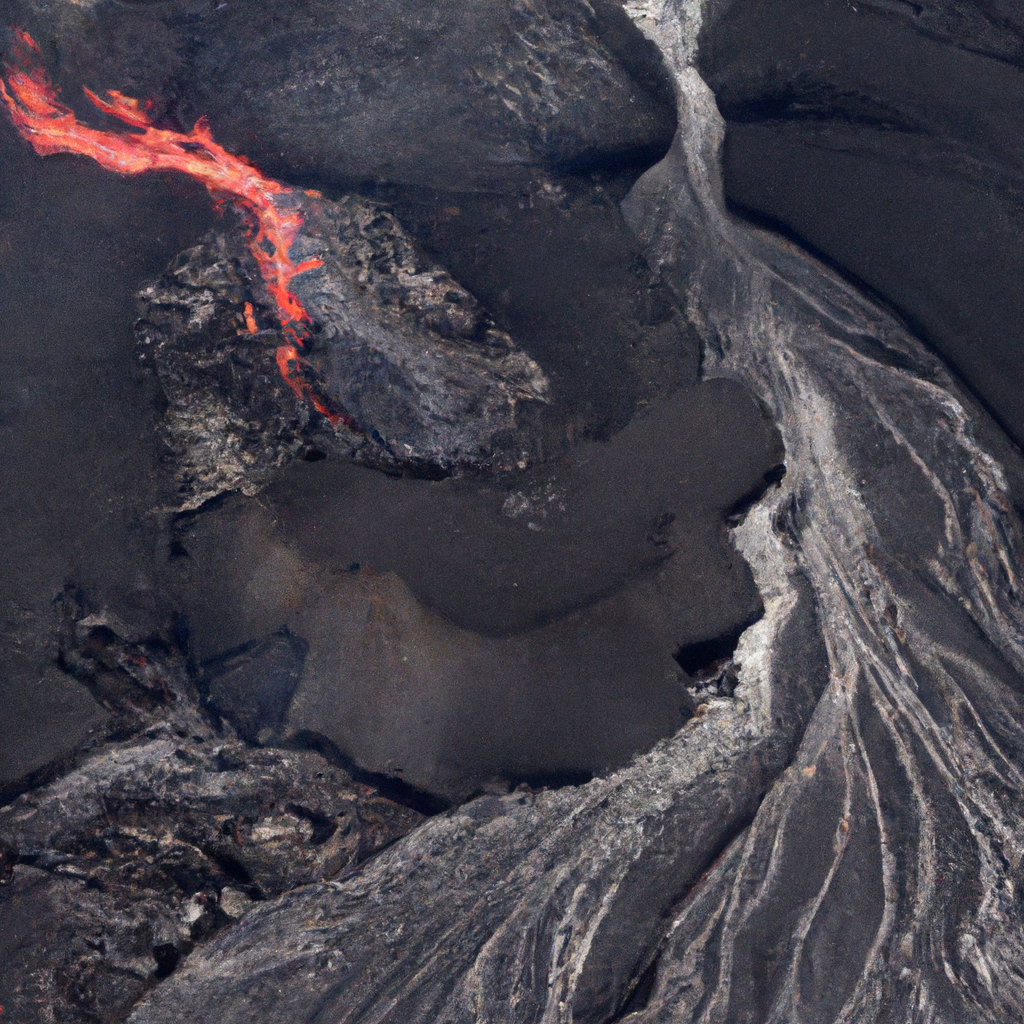
Ashfall and Air Quality
Volcanic eruptions can also result in the deposition of ash, which can have far-reaching effects on air quality and daily life. Ashfall from volcanic eruptions not only disrupts transportation and agriculture but also poses health risks, especially to individuals with respiratory conditions. The fine particles in volcanic ash can irritate the lungs and eyes, leading to breathing difficulties and other health issues. The ash can also damage machinery and equipment, including engines and electrical systems, further impacting daily life and economic activities.
Volcanic Gases and Health Risks
In addition to ash, volcanic eruptions release significant amounts of gases into the atmosphere. One of the most common and dangerous gases emitted during volcanic activity is sulfur dioxide (SO2). Exposure to high levels of SO2 can cause respiratory problems, particularly for individuals with pre-existing respiratory conditions. Other gases emitted during volcanic activity include carbon dioxide (CO2) and hydrogen sulfide (H2S), which also pose health risks in high concentrations. Volcanic gas emissions are closely monitored by organizations such as the Hawaiian Volcano Observatory to ensure the safety of residents and visitors.
Volcanoes and Biodiversity
Despite the challenges and risks posed by volcanic activity, Hawaii’s volcanic landscape nurtures a remarkable diversity of plant and animal life. The unique conditions and isolation of the islands have led to the evolution of numerous endemic species that have adapted to the harsh volcanic environment.
Unique Plant and Animal Adaptations
Hawaii’s volcanic environment has allowed for the evolution of plant and animal species found nowhere else on Earth. From Koa trees to Silverswords, numerous plant species have adapted to survive in the nutrient-rich volcanic soils and withstand the rigors of their geological surroundings. Animal species such as the Hawaiian Hoary Bat and the Hawaiian Monk Seal have also developed unique adaptations to thrive in the volcanic archipelago. These endemic species reflect the incredible biodiversity that can arise in even the harshest and most challenging environments.
Island Biogeography
Hawaii’s isolation and unique environmental conditions have given rise to a fascinating field of study known as island biogeography. The islands’ distinct volcanic landscapes, combined with the geographical isolation, have allowed for the evolution of species in isolation from the rest of the world. As a result, Hawaii has become a living laboratory for biologists and ecologists to study the processes and mechanisms that govern the formation and adaptation of species on islands.
Conservation Efforts
Recognizing the ecological importance of Hawaii’s volcanic landscapes, ongoing conservation efforts strive to protect and preserve the delicate balance of biodiversity. Numerous national parks, such as Hawaii Volcanoes National Park and Haleakala National Park, have been established to safeguard the unique ecosystems and educate visitors about the rich natural heritage of the islands. Local communities, government agencies, and conservation organizations work together to manage invasive species, restore native habitats, and promote sustainable tourism practices to protect the fragile ecosystems that rely on volcanic landscapes.
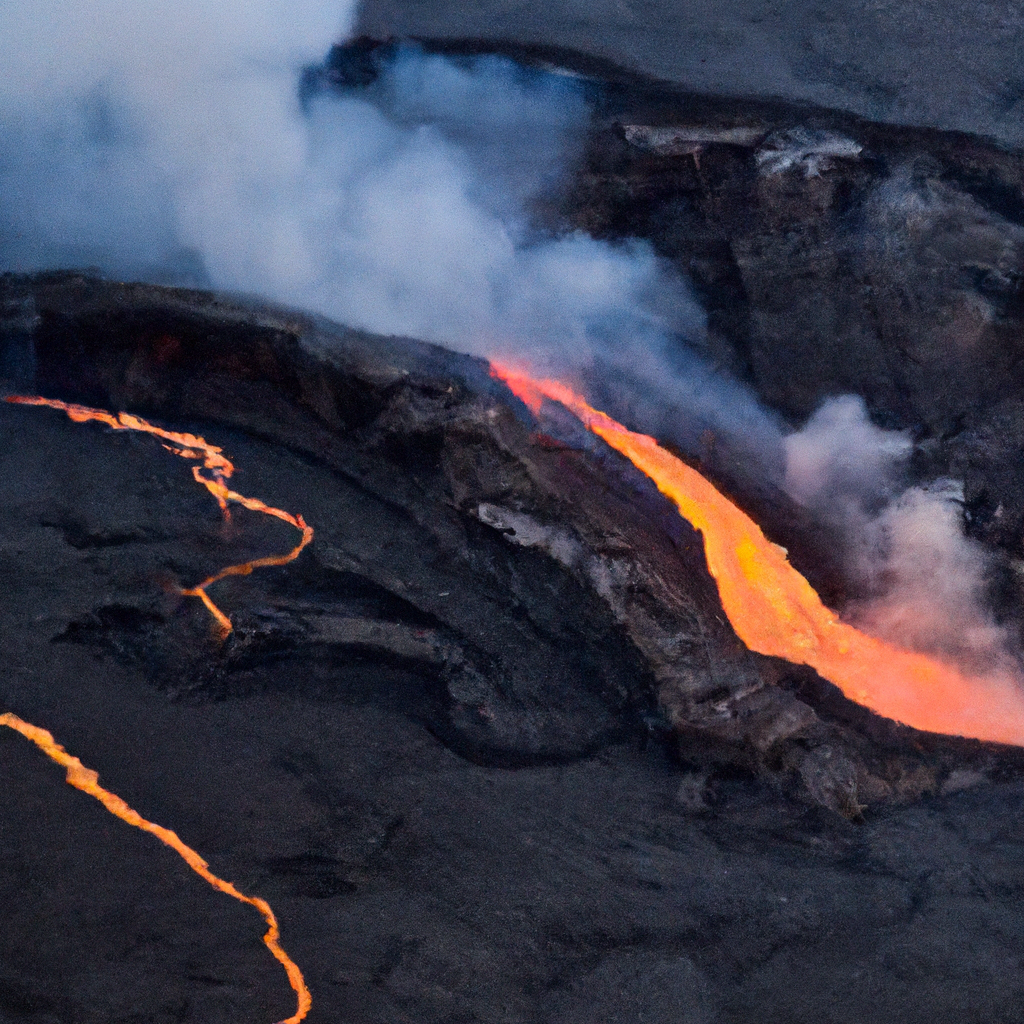
Volcanic Influence on Hawaiian Culture
Volcanoes hold a deep spiritual significance in Hawaiian culture, shaping the beliefs, art, music, and traditions of the islands’ indigenous people.
Hawaiian Creation Myth and Volcanos
According to Hawaiian mythology, the volcanoes of Hawaii are the embodiment of the deity Pele, the goddess of fire, lightning, wind, and volcanoes. Pele is said to live in the Halema’uma’u Crater within Kilauea Volcano, and her presence is felt in every volcanic eruption. The creation myth revolves around the story of Pele and her sibling rivalry with her sister, Namakaokaha’i, who controls the ocean. This eternal conflict between the goddesses represents the ongoing battle between the volcanic forces and the powerful oceanic forces that shape the Hawaiian landscape.
Volcanoes in Hawaiian Art and Music
Volcanoes have provided a rich source of inspiration for Hawaiian artists and musicians throughout history. Traditional Hawaiian art often features depictions of volcanoes, lava flows, and other volcanic phenomena. Artists incorporate vibrant colors and dynamic imagery to reflect the raw power and beauty of the volcanic landscape. Similarly, Hawaiian music often references volcanoes in its lyrics, evoking the spiritual and cultural significance of these majestic natural wonders. The sound of traditional Hawaiian instruments, such as the slack-key guitar and the ukulele, can transport listeners to the very heart of a volcanic eruption or the lushness of a volcanic landscape.
Religious and Spiritual Significance
Volcanoes play a fundamental role in Hawaiian spirituality, serving as a connective force between humans and the divine. The reverence for Pele and the recognition of her role in the creation and ongoing evolution of the islands are deeply ingrained in Hawaiian culture. Volcanic eruptions are seen as powerful spiritual events, and offerings are often made to honor Pele and seek her protection. The spiritual connection to volcanoes reinforces the deep respect and appreciation that the people of Hawaii hold for the land and its remarkable volcanic landscapes.
Tourism and Geotourism
Hawaii’s volcanic landscapes have long captivated the imagination of travelers worldwide. The unique opportunity to witness the beauty and power of volcanic activity has made volcano tourism a significant economic driver for the state.
Volcano National Park
Hawaii Volcanoes National Park, established in 1916, offers visitors an unrivaled experience of the island’s volcanic landscapes. The park encompasses two active volcanoes, Kilauea and Mauna Loa, and provides an opportunity to witness volcanic eruptions, lava flows, and other volcanic phenomena up close. Guided tours, hiking trails, and visitor centers offer educational resources and insights into the geological processes that have crafted the islands over millions of years. The park’s breathtaking scenery and unique experiences make it a must-visit destination for geology enthusiasts and nature lovers alike.
Popular Volcano Viewing Spots
Aside from the national park, Hawaii offers numerous other volcanic viewing spots that are accessible to visitors. The Jaggar Museum in Hawaii Volcanoes National Park provides a panoramic view of Halema’uma’u Crater and Kilauea Caldera, offering a chance to witness the ever-changing volcanic activity. The Chain of Craters Road provides stunning vistas of lava fields, sea cliffs, and ancient petroglyphs. Volcano House, a historic hotel nestled on the rim of Kilauea Caldera, offers unrivaled views of the volcanic landscapes and provides a truly immersive experience for volcano enthusiasts.
Economic Impact of Tourism
Volcano tourism plays a vital role in Hawaii’s economy, generating significant revenue and jobs for the state. The allure of witnessing volcanic landscapes and the unique geological phenomena attracts visitors from around the globe, contributing to the tourism industry’s growth. Visitors who come to experience Hawaii’s volcanoes support local businesses, hotels, and restaurants, stimulating economic activity throughout the islands. Additionally, tourism revenue plays a crucial role in funding conservation efforts and supporting the preservation of Hawaii’s unique volcanic landscapes.
Volcanic Monitoring and Research
Given the ongoing volcanic activity in Hawaii, comprehensive monitoring and research efforts are crucial in understanding volcanic processes and predicting future eruptions.
Hawaiian Volcano Observatory
The Hawaiian Volcano Observatory (HVO) is a branch of the United States Geological Survey (USGS) dedicated to monitoring and studying volcanic activity in Hawaii. Established in 1912, the HVO is the oldest volcanic observatory in the United States. Equipped with a network of seismometers, gas analyzers, and other monitoring instruments, the HVO provides real-time monitoring data, issues eruption alerts, and conducts research on the volcanic processes occurring in Hawaii. The wealth of scientific knowledge gathered by the HVO allows for a better understanding of volcanic activity, informing volcano hazard assessments and helping to protect the communities living in proximity to active volcanoes.
Geological Studies and Monitoring Techniques
Geological studies and monitoring techniques form the backbone of volcanic research in Hawaii. Scientists and geologists utilize a range of tools and methods to monitor volcanic activity, including satellite imagery, ground deformation monitoring, gas measurements, and seismic monitoring. These techniques enable researchers to track changes in volcano behavior, identify potential hazards, and better understand the underlying processes that drive volcanic eruptions. By continually expanding our knowledge of volcanic activity, scientists can work towards refining predictive models and ultimately enhance the safety and preparedness of communities living in volcanic regions.
Future Volcanic Predictions
Predicting volcanic activity, while challenging, is an area of ongoing research in Hawaii. With advanced monitoring techniques and an expanding knowledge base, scientists strive to improve their ability to forecast volcanic eruptions and mitigate associated risks. By closely monitoring changes in ground deformation, seismic activity, and gas emissions, researchers can identify precursors to volcanic eruptions and issue timely warnings to communities at risk. Continuous advancements in volcanic research and monitoring techniques contribute to our understanding of volcanic processes, allowing for better predictive capabilities and the protection of lives and properties.
Volcanic Islands Worldwide
The volcanic activity that has shaped Hawaii is not unique to the archipelago. Volcanic islands can be found throughout the world, each with its own unique characteristics and geological history.
Global Distribution of Volcanic Islands
Volcanic islands are scattered across the globe, forming chains and clusters that provide unparalleled natural beauty and geological wonders. The Pacific Ring of Fire, a region characterized by intense seismic activity, is home to numerous volcanic islands, including Japan, Indonesia, and New Zealand. The Azores in the Atlantic Ocean, the Canaries off the northwestern coast of Africa, and the Galapagos Islands in the Pacific are just a few examples of the many volcanic archipelagos that exist worldwide. Each volcanic island chain has its distinct geology, history, and cultural significance, yet all share the common thread of volcanic activity shaping their landscapes.
Comparing Hawaii with Other Island Chains
While all volcanic island chains share a common origin, the specific characteristics of each chain differ significantly. The Hawaiian Islands, with their shield volcanoes and extensive lava flows, are distinctive in their gentler topography and continuous volcanic activity. In contrast, island chains such as the Galapagos and the Canaries exhibit a more diverse array of volcanic formations, including cinder cones, stratovolcanoes, and even calderas. The unique geology and volcanic features found in each island chain are a testament to the diverse processes and forces at work beneath the Earth’s surface.
Lessons from Hawaii’s Volcanism
The volcanic landscape of Hawaii has much to teach us about the planet’s geological processes, the delicate balance of ecosystems, and the profound influence of volcanic activity on human cultures. By studying the formation of the Hawaiian Islands, the ongoing volcanic activity, and the impact on biodiversity and local communities, scientists and researchers gain invaluable insights that can be applied globally. Lessons learned from Hawaii’s volcanism contribute to our understanding of the Earth’s history, the development of sustainable land management practices, and the preservation of cultural heritage. The significance of volcanoes in shaping Hawaii’s landscape extends far beyond the islands themselves, serving as a reminder of the intertwined relationship between nature, culture, and the ever-changing dynamics of our planet.
